Let Them Go Barefoot and 6 Other “Rules” for Play
Climb a tree.
Make mud pies.
Build a fort.
Invent a game that lasts for days.
Play in the rain.
Camp out on the trampoline.
How many of these do you remember doing as a child? Now look at the list again any tell me, when was the last time your children had a chance to do each of these things? I am really interested to know, how often do your children have time for real, free play? Do they have the opportunity to get messy or dirty? Do you tend to wrap them in cotton wool for fear they might hurt themselves?
There’s no denying our lives are busy. Work, school, after school activities, chores, household responsibilities, homework – they all compete for our time, and that of our children. As Immy is getting older and her outside-of-home/school interests take up more time, I am finding that it is harder to find regular blocks of time to dedicate to play. And in talking with other families, I know we are not alone. But making time for play is important for children of all ages, not just toddlers and preschoolers.
Fortunately, bringing back real play is easy to do. Giving our children a taste of the best bits of our own childhood simply requires a commitment to making it happen. We just have to loosen our grip on the schedule a little, relax and rediscover the truth that just a little sense of freedom goes a long way, and embrace a new set of ‘rules’ for childhood that really aren’t so new. They are more a nod to the rules of play from the childhood of yesteryear, and here are seven that I believe can make a big difference to the lives of today’s children.
Rule #1: Children need time outside, preferably every day
Spending regular time outside is vital to a child’s wellbeing. As well as developing a child’s physical skills, time outdoors promotes good physical and mental health. It also encourages imagination, creativity and confidence.
With the recent cooler weather here in Perth, my girls are loving being outdoors. Over the course of a recent four day weekend they spent virtually every moment at home playing in our backyard. Now our yard isn’t fancy. It has a bit of lawn, a trampoline, a small cubby house and some fruit trees but they are happy to create games with whatever is at hand, or they drag outside whatever it is they need for the game they are playing. Play doesn’t need to be fancy, just frequent and fun!
Every now and then I’ll add a little provocation to the yard in the hope that it will encourage my girls to spend more time in play. Like a few bamboo poles, old bed sheets and lengths of rope.
In just the first half an hour of play with this invitation I saw my children use skills of co-operation, negotiation, problem solving, leadership, finding and managing resources, perseverance and trial and error. I watched them use their bodies to tie knots, balance, crawl, climb and lift, and to engage all of their senses. They were creative, imaginative and confident. They were relaxed and having fun.
And the play sparked by this simple provocation has been going on for four days now and is still evolving!
Rule #2: Children need room for healthy risk taking
As I shared recently, children who take reasonable risks develop a strong sense of self awareness, confidence in their own abilities, perseverance and resilience. And kids take risks every day – when they go outside of their comfort zone and ask someone to play with them, or join a new sporting team or challenge themselves to ride faster or climb higher or master that handstand or cartwheel. Unfortunately, as parents we often put the brakes on when it comes to even the slightest element of risky play, wrapping our kids in cotton wool to keep them safe, rather than letting them learn to know their own limits.
Now, if you are anything like us, you don’t have any trees worth climbing or room for cycling in your own backyard. Much of our larger scale outdoor risk taking takes place on nature based outings or at local playgrounds while our healthy risk taking at home is more in the form of (trying to) ignore them jumping on the bed or off the couch, or turning a blind eye to a rowdy game of roughhousing or an excited round of Murder in the Dark. I’m working at rethinking the over cautioning and letting go so my children can learn to trust themselves – ironically, something they can only learn to do when they take risks!
Rule #3: Let them get dirty
While I know none of us exactly enjoy clearing the never ending mountain of laundry, I’ve always been of the opinion that it has to be washed anyway! So I try to take a yes more than no approach to my children’s requests to get messy. We make potions and mud pies, they help with the gardening and you know we just love all manner of art projects and sensory play.
Play is messy, gosh who are we kidding, real life is messy! So I just keep reminding myself that as families we are all in the same boat and that a little bit of dirt or mess never hurt anyone, and as I watch my child launch herself at another muddy puddle in the playground you’ll most likely find me peeking through my fingers as I recite my mantra, “Well, it has to be washed anyway!”
Rule #4: Let them go barefoot
Going barefoot outside epitomizes childhood. Being barefoot awakens the senses, it helps children to walk and run and jump and balance more confidently and capably. My girls are pretty much permanently barefoot at home, inside and out. Yes, we’ve had bee stings and splinters and scrapes but our home is not littered with glass or any other particular sharp or hazardous obstacles (and to be honest, neither are most of our local playgrounds!) and my children have never needed anything stronger than an ice pack or band aid and a cuddle as a result of going barefoot. In fact, going barefoot strengthens the feet and leg muscles and improves agility, both of which are surely going to reduce the likelihood of harm rather than increase it.
Rule #5: Let them play with sticks
As I mentioned above, kids who are used to playing will play with whatever is at hand, and when playing outdoors that often means sticks and sand and rocks and water. The humble stick may well be considered the earliest toy known to man and in the eyes and hands of a child a stick transforms into a sword or magic wand, fishing rod or conductor’s baton. I even remember Immy regularly using sticks at the park to represent vacuum cleaners when she was about two and a half! Sticks and other simple loose parts invite a child to think and play creatively and imaginatively. In fact, adding a small collection of loose parts such as sticks or bamboo poles, stones, stumps, wood cookies, gum nuts (as well as sand and water) to your backyard is a fantastic, low cost way to invite your children to play.
Rule #6: The big kids rule (and the kids will work it out)
So the point is not that it is okay for the big kids to wield their power in a nasty or horrible manner but that our children will disagree and that they need space to work it out. Just as we did as children. I remember hanging around in tribes of cousins and siblings, some younger, some older and having to negotiate the game and the roles and the rules. In most cases, the older children made most of those decisions and the younger ones fell in line because they just wanted to be in the gang and part of the play, to feel that sense of connection and community. Sometime feelings were hurt and we would regularly fight and make up but we learnt to negotiate and cooperate, to have empathy for each other and to take care of the younger children in the group.
Children learn from playing with other kids in ways they simply can’t with adults. So we (the adults) need to create opportunities for our children to play with children of different ages, in different sized groups and then sit on our hands and let them get on with it.
Rule #7: Complex play takes time to develop but if you leave them to it, it will come
“Can I go outside?” was the first thing my daughter asked this morning, before we’d even had breakfast! It is the fifth day of what seems to have become their ‘adventure clubhouse building project’ and as I have observed their play over the last few days it has been clear to see it becoming more involved and complex. And the thing about complex play is that often it looks like absolutely nothing to the adult observer. Which is quite possibly why we under value the potential of play so much?
Complex play involves rules and negotiations and conversation. It develops personal and social competencies in authentic ways that organised activities cannot. Complex play needs time and space and children, children of all ages who are ready and willing to play.
Play really is the language of childhood. We, the adults, have to learn to listen to what is being said.
Would you add any ‘rules’ to my list?

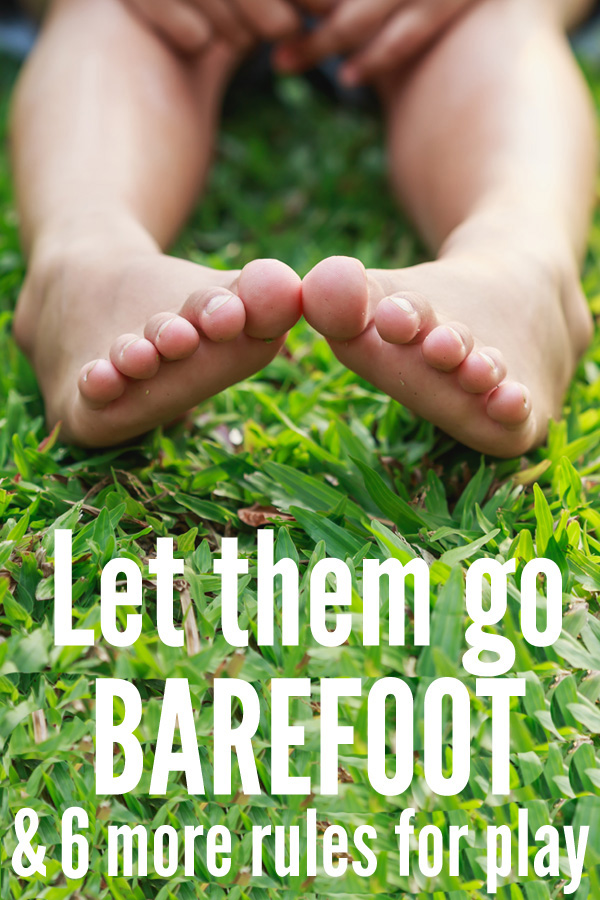
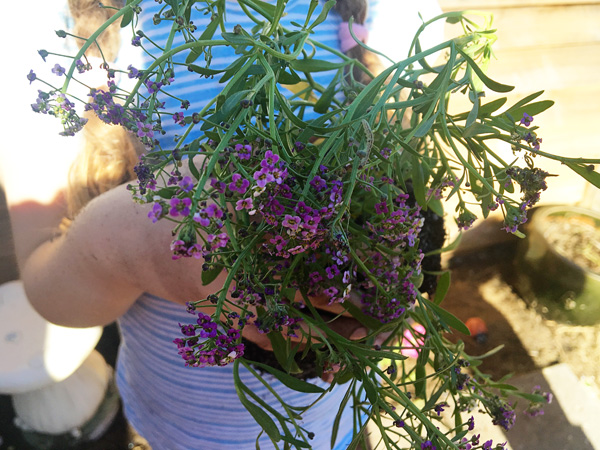
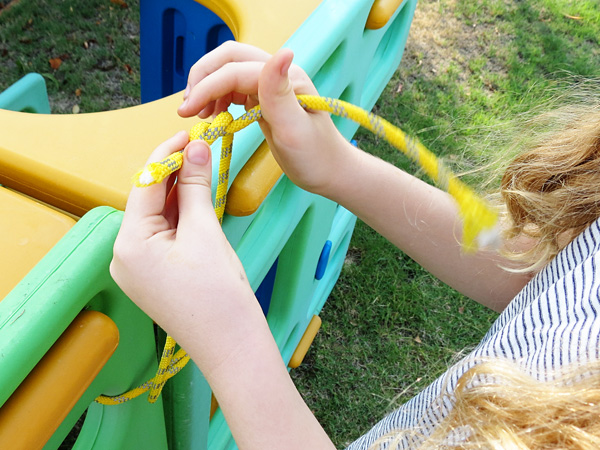
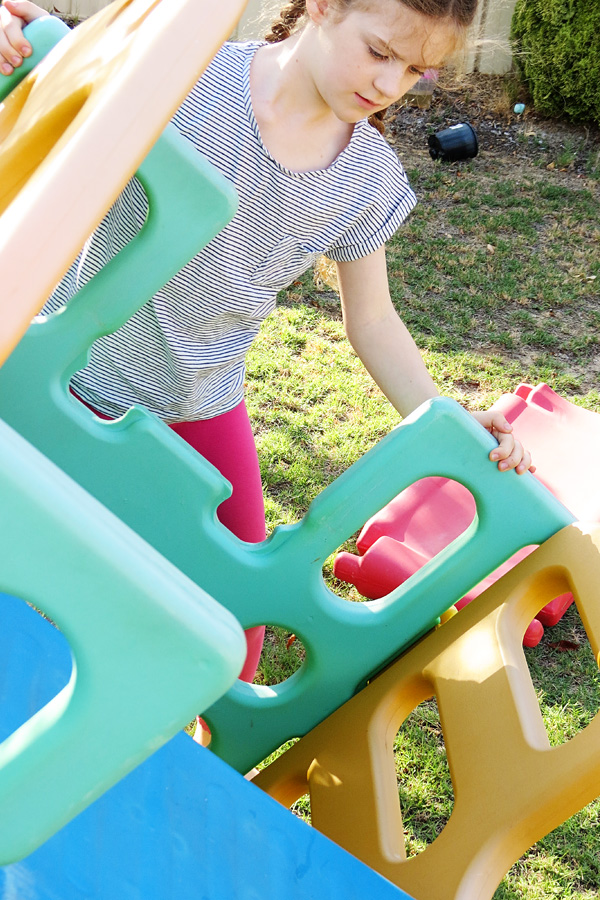
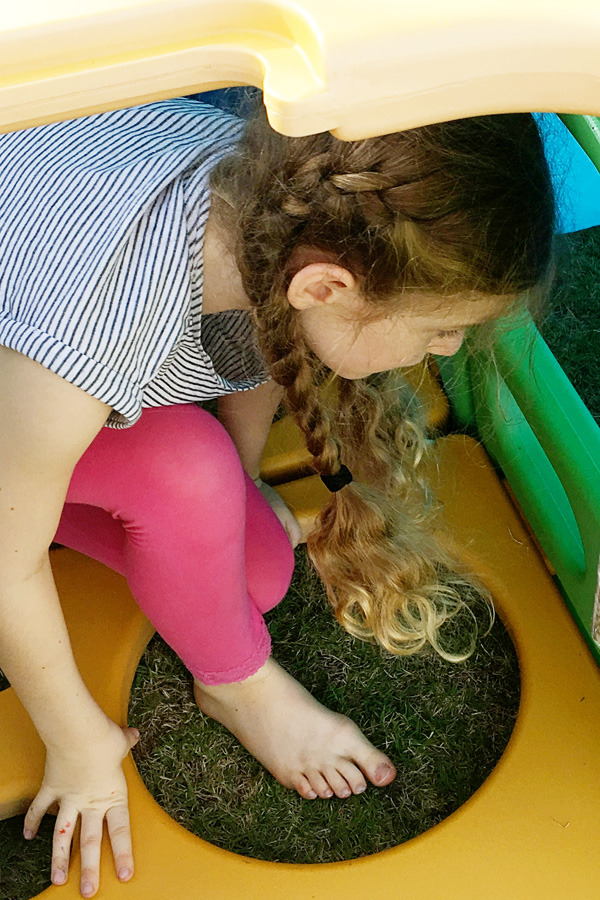
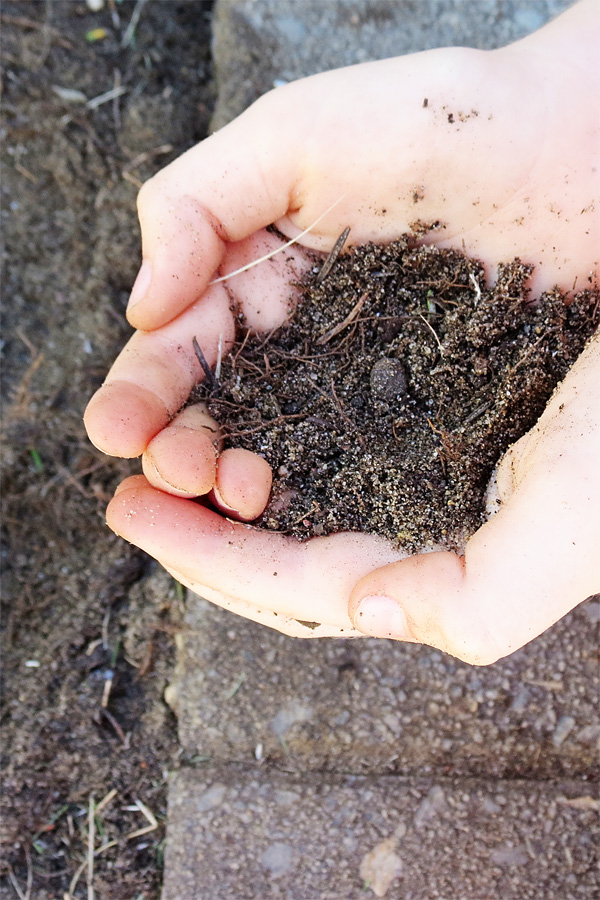
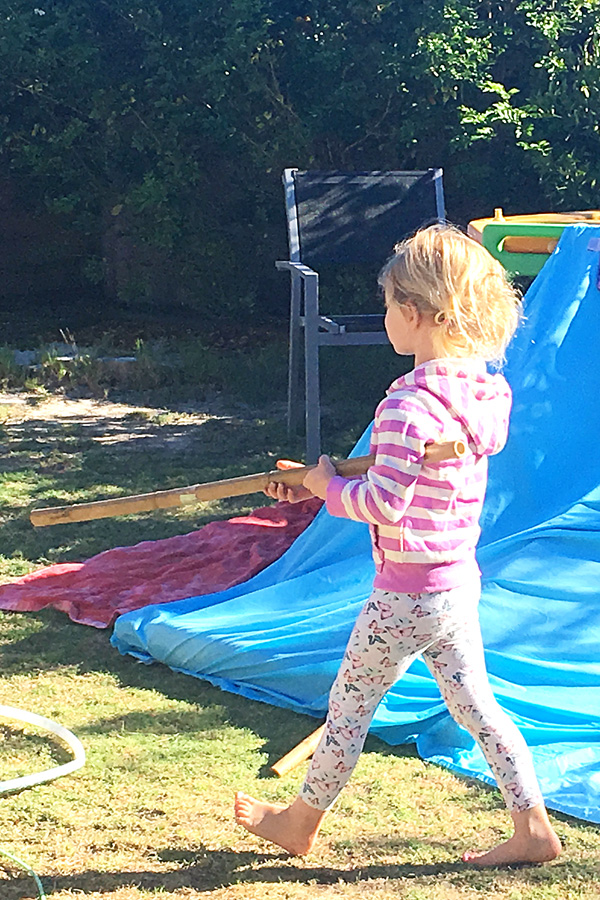
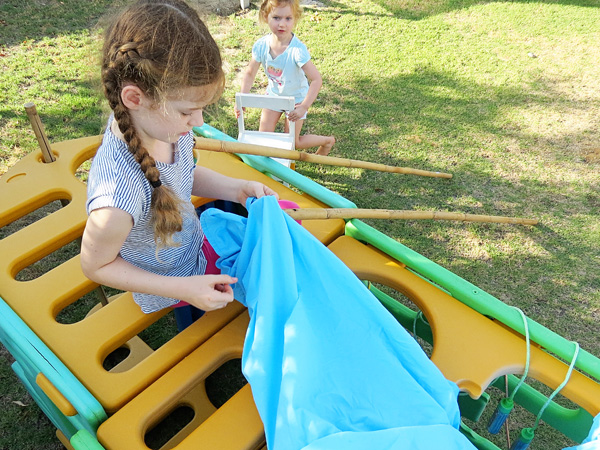
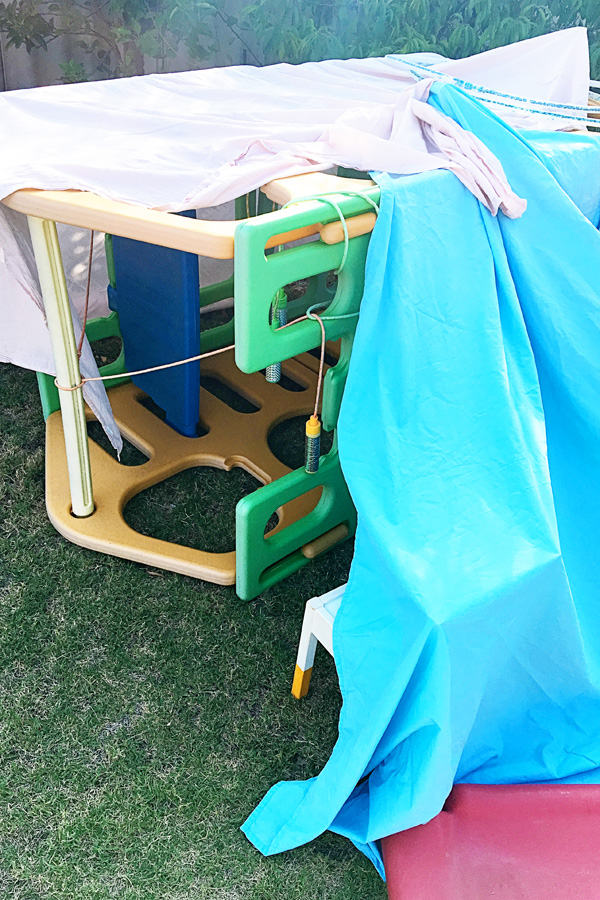
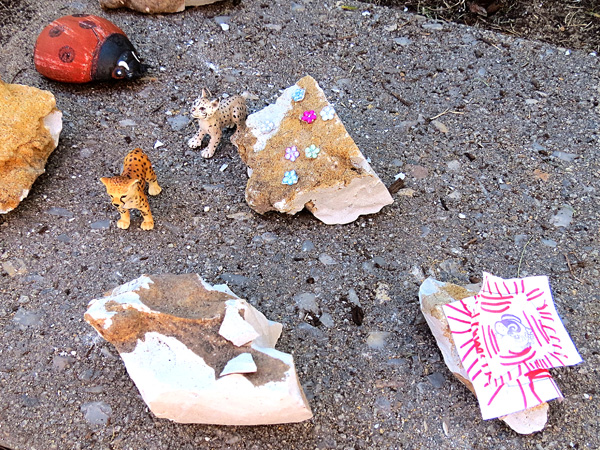
I think the ‘let them get dirty’ rule is one of the biggest things at our house.
Letting the kids get dirty, or make a mess, or do something a little crazy or out of the ordinary seems to spark their ideas and imaginations.
That and letting things hang around. I am always tempted to tidy up whatever epic creations my kids have made outside, but if I leave them they are always quick to head back outside the next chance they have.
You are so right on both accounts, my girls are exactly the same!
Sometimes when we had a sitter, they would apologize for the kids being so dirty, I always said it was a sign they had fun! They are washable!
What a great video! Over the last 6 weeks I have been focusing more on fun and saying yes more to things, I might normally said no to and it has made a huge difference to family harmony and enjoyment. Great post Christie.
Oh that is great to hear, Nic. Thanks for stopping by!
We definitely follow those rules around here, the girls (4, almost 3, and 1) love playing outside, and getting messy. It is amazing how they bring in so many seemingly random little bits and pieces into whatever they are doing, looks like junk to us but these bits take on important functions, or even personalities.
All of those rules are so important, however its quite astounding how many parents feel the need to continuously control their kids play – either the environment with regards to mess and risk, or the context/type of play and how they do it.
I would add that another important thing is to let kids play without you being around all the time. Sure there is a time for being hands on and interacting with your kids, but they are also completely fine to create their own play, without us constantly hovering, warning, suggesting, advising, or mediating. I think that for some they feel (or fear) that leaving the kids to it will make them appear a bad parent for either not ensuring safety, or for not being involved enough.
And as for mess, within the last few weeks I have had several mums comment about how they just couldn’t stand to have kids do messy activities at home, that mess is what preschools are for, and one even said she was beginning to get worried she was passing her need for cleanliness on to her son in an unhealthy way as when she suggested to her 4 year old to have a friend over he replied that he didn’t want to because they would just make the house messy! I felt that was such a sad comment, but a clear example of how our behaviours and attitudes impact our children’s development.
I love your parenting rule Miriam….yes, it’s okay to let your kids be kids and give them some physical space. Learning to just listen to your kids without actually being there 100% of the time is quite liberating as a parent as you can still hear everything without feeling the need to be a rules imposer or imposter to their play.
I completely agree, Miriam! The story you share about the messy house is so very sad but maybe it has been just what the family needs to hear 🙂 Thank you so much for sharing.
Super great post! Love your rules! And my kids have done those – except for camp out on the trampoline, but they are young yet and I am sure it will happen! Thanks for inspiring us xx
Thanks, Kelly. I love seeing your family’s wonderful adventures via Facebook and your blog 🙂
Wow, this is such a great post as it really rings true to my beliefs about children’s play. I work in a preschool as the preschool teacher and we operate a simultaneous indoor and outdoor rhythm of the day. This means that the children decide which play space they would like to play in. No surprises that the majority of children love to play and create outside. There is absolutely something about being outside that inspires thinking and creativity. I’m also a Mum to two boys who are 7 and 10 years old. Our holidays are always outdoor focussed in national parks. They love the space and opportunities they would not normally have in suburbia. My eldest loves climbing trees and is an agile rock hopper. My youngest has fallen out of two trees and off play equipment, luckily with no major injuries. These falls have happened because he hasn’t worn his glasses to help him with depth perception, so I am a little more cautious about him climbing on these things. They play games with sticks and rocks..fabulous self directed play that let’s them “learn” about their own body awareness and spatial awareness. They noth have a great sense of creativity, spatial awareness, appreciation of the outdoors, sociability and sense of adventure. Bring on the outdoors, no matter what the weather!
I too ran an indoor outdoor program in my early childhood classrooms, Mardi, and agree that the time outdoors is so valuable to all aspects of learning. You have reminded me to add some national park visits to our school holiday activity list too! Thank you.
Hello Christie
Worth reading topic..Well, in my child’s case I give him space to be himself …i leave him free to roam,explore n experiment things around. Butterfly chase, getting dirty in the garden,watering the plants and getting wet is all a joyous moment for my child.
And I think my 18 month old baby manages loads of things by himself as I give him opportunity to explore things himself.
That’s fabulous 🙂
Love these rules! We have one rule at our place when it comes to messy play – they should ask first, and I will always do my best to say yes. (Sometimes it’s a ‘yes, but after lunch’ or ‘yes, but you have to take your shoes off first’).
Sounds like a great compromise 🙂
I will add — let them play with things “the wrong way”. I just had a conversation with a friend about moms not letting kids walk up a slide — even when there are no other kids around. We both agreed that we think it’s good for them and they discover so many more uses for things and the play is so much more creative if they can use things as needed instead of simply “as intended”.
Yes! That is a great addition, Amy!
This is the most reasonable arctical on this type of subject I have seen. Thanks for the balanced language and explanations!
Thank you so much for saying so, Susa 🙂
What a great article! My 5 & 7 year old love to play outside, with random things, and don’t even know they are messy! The struggle I had was keeping any of their clothes nice! So I designated a spot in each of their rooms for older clothes with stains or holes, things that had seen better days. Now when they want to play outside, or it’s time for chores, we just tell them to change into play clothes, and they take care of it from there! Opportunity for independence and no more good clothes ruined.
I’ve also done this with shoes on the back porch. We have some places that shoes are necessary (barn, shop, chicken pens).
I love how you have come up with systems that work for your family. Thank you so much for sharing 🙂
We have a laundry basket by the back door and my boys strip down before coming back in the house. I gave up on shoes a long time ago, so they know to wash their feet when they come in. Love these ‘rules’ because they aren’t rules.
Love the basket idea!
I’ve seen parents not let their kids out the buggy because it’s muddy.. personally I actually feel disappointed when I look at my son’s clothes at the end of the day and realise they don’t NEED washing, feels like a fail!
My son’s nursery have had real trouble trying to get him to wear shoes. I think they’ve given up on it now!
My kids usually get filthy at home. I hate dirty clothes though, so we have come to a compromise. As long as it is not the middle day or they stay in the shade, they get to play in their undies or swimmers. Then when it is not too cold clean up happens by way of water filled boxes and whatever they can find to be a toy.
What a great compromise 🙂
I love this! We are eagerly awaiting the summertime so we can spend the majority of our days outdoors. This winter here in Canada we’ve had several days with wind chills -18C or colder, which means with 3 under 3 in the house we haven’t gotten out much. Everyone is feeling it and the level of excitement when it’s warm enough to play outdoors is astounding. We love sledding, building snow-castles and getting soggy in the winter, but it’s not the same as running barefoot in the summer!
As an adult of 29 I canpretty much say I did all these rules.
My two daughters (ages 10 and 14) will undoubtably be barefoot most of the summer again this year when schools out for the summer. When not in school they are almost always barefoot, even when we go shopping. My oldest has no problem with hot parking lots and will find a cart for her sister to ride to the store in when the pavement is too warm for her sister’s feet. I seem to think it was when my oldest was 11 or 12 that her feet were tough enough for hot parking lots.
Also during the summer allow them to wear bathing suits with a t-shirt over the top when outside, inside I let them wear nothing as long as they can’t be seen from outside. Thankfully we have a good fence around the pool, so if they want to leap in the pool naked they can.
Neither of my daughters need shoes, their feet are tough enough to be outside without (probably because neither wore anything on their feet until they started school), but there are still people who refer to them as “poor girls” and “offer to buy them flip flops” or “are concerned they may step on something”. Neither girl is “poor” and both have their own I-phones.
They simply prefer to be barefoot. It doesn’t hurt them. They can run across the parking lot, with black soles, and it doesn’t matter.
Well summer will soon be here.